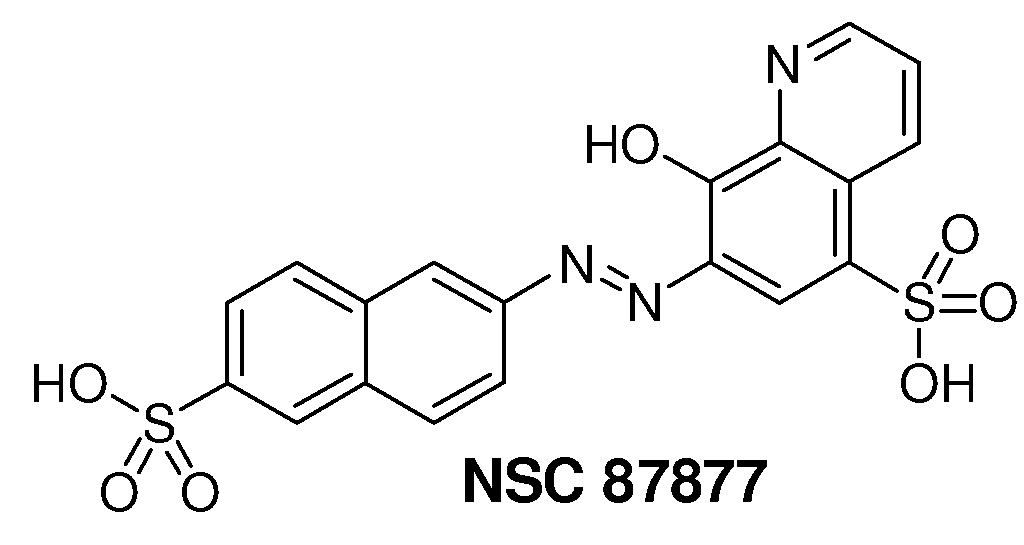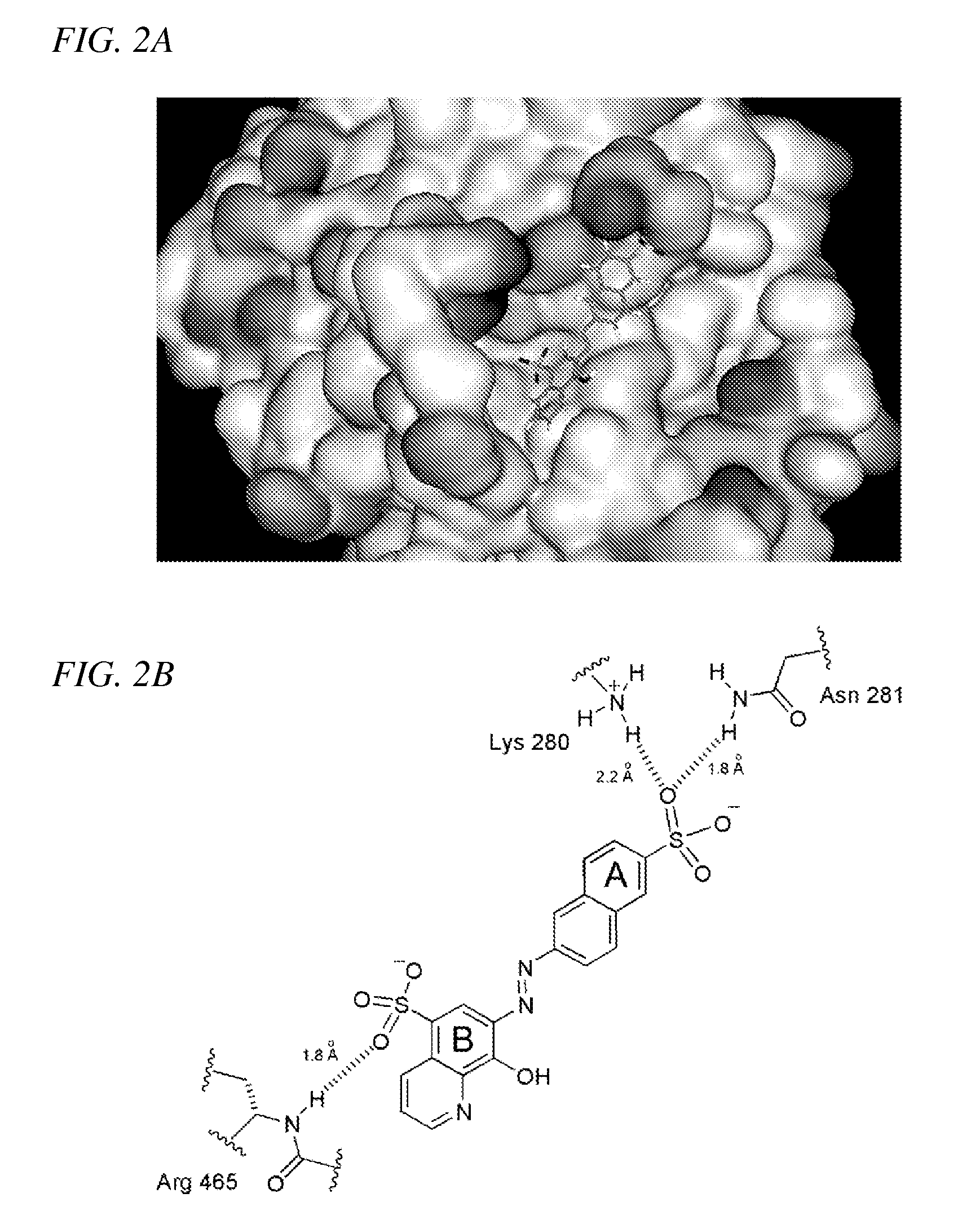Inhibition of Shp2/PTPN11 Protein Tyrosine Phosphatase by NSC-87877, NSC-117199 and Their Analogs
a technology of protein tyrosine phosphatase and inhibitors, which is applied in the field of cancer therapy, can solve the problems of many mechanistic problems regarding the way shp2 mutants cause noonan syndrome and jmml, and achieve enhanced protein tyrosine phosphatase inhibition and no detectable off-target effects
- Summary
- Abstract
- Description
- Claims
- Application Information
AI Technical Summary
Problems solved by technology
Method used
Image
Examples
example 1
Identification of NSC-87877 as a Shp2 PTP Inhibitor.
[0061]The NCI Diversity Set chemical library that contains 1981 compounds was screened for Shp2 PTP inhibitors using a GST-fusion protein of rodent Shp2 (GST-Shp2ΔN). Confirmed hits (>50% inhibition at 10 μM) that were either 1) organometallic agents, 2) arsenic compounds, 3) previously identified PTP inhibitors (NSC-668394, NSC-5069) (Lazo et al., 2002), 4) potential carcinogens, 5) with lower IC50 for Shp1 than that for Shp2 in the initial analyses, 6) a non-specific protein binding agent, or 7) polymers were excluded from further analysis. Authentic compounds of the remaining seven hits were either obtained from independent sources or synthesized in house and then compared to the samples from the NCI Diversity Set library for inhibition of GST-Shp2. Only one of these compounds, NSC-87877 (FIG. 1), showed a similar or greater potency than the sample of the same chemical identification obtained from NCI.
[0062]The PTP inhibitory ac...
example 2
NSC-87877 binds to the Shp2 Catalytic Cleft.
[0063]NSC-87877 ranked among top 10% (175th) of the compounds with the best GLIDE scores for the docking to the human Shp2 PTP domain in our virtual screening of 2368 3D structures derived from the NCI Diversity Set. Computer docking of NSC-87877 (FIG. 2) suggested that the B-ring sulfonic acid group forms hydrogen bond with the backbone NH group of Arg-465. Arg-465 is a conserved residue in the PTP signature motif (motif 9) VHCSXGXGR[T / S]G located at the base of the PTP catalytic cleft (Andersen et al., 2001). The A-ring sulfonic acid forms hydrogen bonds with the side-chain NH3 group of Lys-280 and the side-chain NH2 group of Asn-281. Lys-280 / Asn-281 are non-conserved PTP residues located adjacent to the phosphotyrosine recognition loop (motif 1) (Andersen et al., 2001). The interaction between aromatic rings of the compound and the protein contributes to the binding through hydrophobic stabilization.
[0064]NSC-117199 was docked to the ca...
example 3
NSC-87877 Inhibits EGF-Stimulated Shp2 Activation.
[0066]To determine if NSC-87877 is able to inhibit Shp2 in the cells, serum-starved HEK293 cells were pre-incubated with or without NSC-87877 and then stimulated with EGF or mock-treated. Shp2 was immunoprecipitated from cell lysates and Shp2 PTP activity was then determined in the immune complexes using DiFMUP as the substrate. Shp2 PTP activity increased 2.6-fold in response to EGF stimulation in the absence of NSC-87877 pretreatment (FIG. 3). Incubation of NSC-87877 alone reduced the basal Shp2 PTP activity by 45%. The EGF-stimulated Shp2 activation was inhibited by 97% when cells were pretreated with 50 μM NSC-87877 (FIG. 3).
PUM
| Property | Measurement | Unit |
|---|---|---|
| angle | aaaaa | aaaaa |
| concentrations | aaaaa | aaaaa |
| concentration | aaaaa | aaaaa |
Abstract
Description
Claims
Application Information
 Login to View More
Login to View More - R&D
- Intellectual Property
- Life Sciences
- Materials
- Tech Scout
- Unparalleled Data Quality
- Higher Quality Content
- 60% Fewer Hallucinations
Browse by: Latest US Patents, China's latest patents, Technical Efficacy Thesaurus, Application Domain, Technology Topic, Popular Technical Reports.
© 2025 PatSnap. All rights reserved.Legal|Privacy policy|Modern Slavery Act Transparency Statement|Sitemap|About US| Contact US: help@patsnap.com



